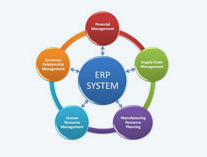Delivering Complete Solutions
Vinculum can handle your entire project, from planning to implementation, and provide the complete solution required. Helping clients achieve their goals is the key to Vinculum’ long-term success. We assume the responsibility and accountability for project deliverables, managing risk and directing overall resources.
Requirements for Analysis and Planning
In this phase of the software development life cycle, the objective is to conduct an initial study of the user domain and determine the scope and feasibility of a project. It will also determine high-level business and technical requirements.
The steps involved:
- Interview key people in the specific business areas that are to be developed.
- Identify and understand Legacy systems, networks and planned upgrades paths in all aspects that might affect the system development. Some aspects to consider are operating system and operating system independence, scalability, maintainability, performance, existing and future infrastructure, security, requirement flexibility and integration with existing systems.
- Prepare a requirements specification that summarizes the clients’ requirements
- Determine high-level solution(s) by identifying system requirements specified by the customer and analyzing business process and infrastructure. Identify and include risks associated with different solutions. The solution should encompass the architecture of the new system and its interactions with existing systems.
- Prepare blueprints for the new system showing high-level components. Solutions should be presented with technical details and business related details, with an idea to clearly illustrate the solution from both angles.
- In some cases, prepare a general timeline estimate with high-level deliverables.
Design
This phase of the project considers both planning and design details. Design phase activities determine the practices and course of the development cycle.
The steps involved:
- Determine and document the functional details of the system taking into consideration all outside requirements such as scalability, performance, etc.
- Define the design methodologies and determine the course of action necessary to develop a complete solution. These solutions and methods could involve using tools such as Object-oriented Design and the Unified Modeling Language.
- Develop useful standards and practices for the development process, including use of software metrics, coding practices, version control, communication and management.
- Define development and test environment and determine development tools to use, such as operating system, language, CASE tools, database, testing tools and documentation tools.
- Define a software acceptance test plan, defining the criteria for client acceptance of the final system.
- Develop a software development plan detailing the work breakdown structure and schedule.
- Define the organizational plan and estimate the resources needed and training required.
The design process may not have a definite time line and may be spread across different phases of the software development life cycle. There may be a number of iterations through the various steps in the design phase. These iterations seek to correct deviations or perhaps add new features to the system. The purpose of this phase is to develop the processes that guide and monitor the project and determine its progress.
















